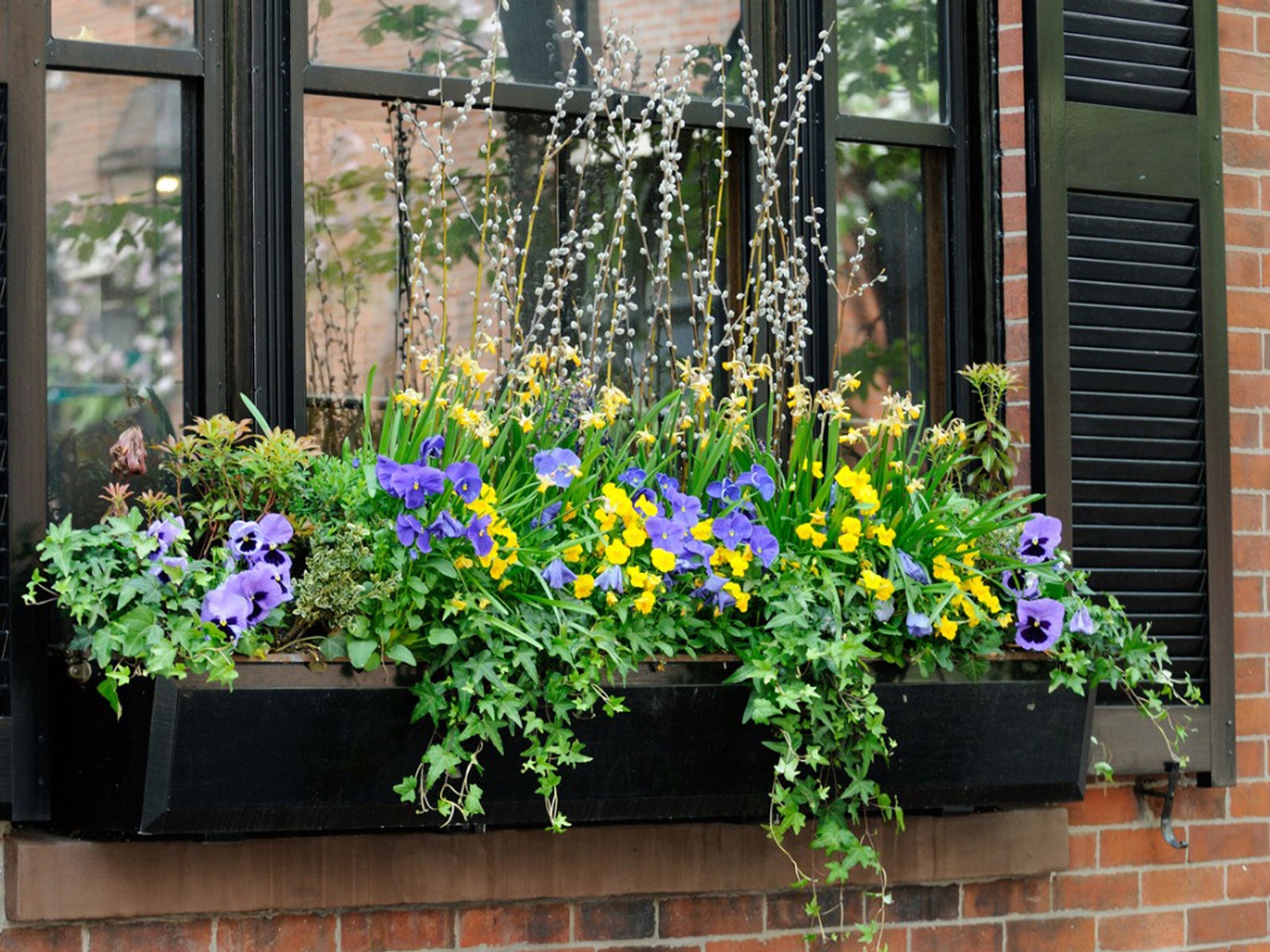Window Box Watering: DIY Window Box Irrigation Ideas

Window boxes may be excellent decorative accents filled with a profusion of blooms or a means of gaining garden space when none is available. In either case, consistent window box watering is key to healthy plants, which is where a self-watering window box system comes into play. Irrigation for window boxes with the installation of a DIY window box irrigation will keep your plants watered even when you’re out of town.
Window Box Watering
One of the reasons window box watering can be such a pain is that the containers by nature are not particularly deep, meaning they dry out more rapidly than plants growing in the ground. This also means remembering to water more frequently which, while optimal, isn’t always the case. A self-watering window box system on a timer will remember to irrigate the plants for you.
Window boxes are sometimes difficult to keep consistently watered due to their placement. Other times window boxes are just plain difficult to get to but installing a DIY drip system solves that problem.
DIY Window Box Irrigation
Drip irrigation systems for window boxes are designed to allow water to slowly drip into the root system of plants. This slow watering is highly efficient and allows the foliage to remain dry.
Drip systems designed for smaller spaces can be easily found at the local hardware store or online. They generally come with tubing, emitters, and everything else needed, although they may or may not come with a timer, or you can buy everything you need separately.
If you decide a DIY window box irrigation system is the way to go, you will need to consider a few things before purchasing your materials.
Decide how many boxes you wish to irrigate with the self-watering window box system. Also, how much tubing you will need, this will require measuring from the water source through each window box that will be irrigated.
Gardening tips, videos, info and more delivered right to your inbox!
Sign up for the Gardening Know How newsletter today and receive a free copy of our e-book "How to Grow Delicious Tomatoes".
Figure out if you will need to go in different directions. If so, you will need a “tee” fitting to direct your mainline tubing. Also, how many places will the mainline tubing end? You will need end caps for each of those places.
You will need to know if there will be any 90-degree turns as well. The mainline tubing would kink if you tried to make it turn sharply so instead you will need elbow fittings for each turn.
Another Method of Irrigation for Window Boxes
Lastly, if a window box watering system seems too complex, you can always resort to another method of irrigation for window boxes. Cut the bottom off of an empty plastic soda bottle. For aesthetic purposes, remove the label.
Place the lid on the cut soda bottle. Make four to six holes in the lid. Submerge the bottle in the soil of the window box to hide it a bit but leave the cut end out of the soil. Fill with water and allow the slow drip to irrigate the window box.
The number of bottles you should use to self-water depends on the size of the window box but certainly there should be one at either end as well as in the middle of the box. Refill the bottles regularly.

Amy Grant has been gardening for 30 years and writing for 15. A professional chef and caterer, Amy's area of expertise is culinary gardening.
-
 8 Perfect Flowers To Plant With Tomatoes To Boost Yields & Banish Pests
8 Perfect Flowers To Plant With Tomatoes To Boost Yields & Banish PestsDon’t forget flowers when choosing companion plants for your tomato beds or pots. These pretty, fragrant flowers add beauty but are also highly beneficial.
By Mary Ellen Ellis
-
 Want The Longest Lasting Hydrangea Flowers? Grow These 8 Panicle Hydrangea Varieties
Want The Longest Lasting Hydrangea Flowers? Grow These 8 Panicle Hydrangea VarietiesFor ornamental shrubs that deliver the longest flowering seasons with plush blooms and delicate hues, these panicle hydrangea varieties are essential in your yard
By Tonya Barnett